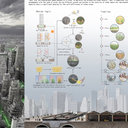Silybin-mediated inhibition of Notch signaling exerts antitumor activity in human hepatocellular carcinoma cells.
Ключевые слова
абстрактный
Hepatocellular carcinoma (HCC) is a global health burden that is associated with limited treatment options and poor patient prognoses. Silybin (SIL), an antioxidant derived from the milk thistle plant (Silybum marianum), has been reported to exert hepatoprotective and antitumorigenic effects both in vitro and in vivo. While SIL has been shown to have potent antitumor activity against various types of cancer, including HCC, the molecular mechanisms underlying the effects of SIL remain largely unknown. The Notch signaling pathway plays crucial roles in tumorigenesis and immune development. In the present study, we assessed the antitumor activity of SIL in human HCC HepG2 cells in vitro and in vivo and explored the roles of the Notch pathway and of the apoptosis-related signaling pathway on the activity of SIL. SIL treatment resulted in a dose- and time-dependent inhibition of HCC cell viability. Additionally, SIL exhibited strong antitumor activity, as evidenced not only by reductions in tumor cell adhesion, migration, intracellular glutathione (GSH) levels and total antioxidant capability (T-AOC) but also by increases in the apoptotic index, caspase3 activity, and reactive oxygen species (ROS). Furthermore, SIL treatment decreased the expression of the Notch1 intracellular domain (NICD), RBP-Jκ, and Hes1 proteins, upregulated the apoptosis pathway-related protein Bax, and downregulated Bcl2, survivin, and cyclin D1. Notch1 siRNA (in vitro) or DAPT (a known Notch1 inhibitor, in vivo) further enhanced the antitumor activity of SIL, and recombinant Jagged1 protein (a known Notch ligand in vitro) attenuated the antitumor activity of SIL. Taken together, these data indicate that SIL is a potent inhibitor of HCC cell growth that targets the Notch signaling pathway and suggest that the inhibition of Notch signaling may be a novel therapeutic intervention for HCC.




